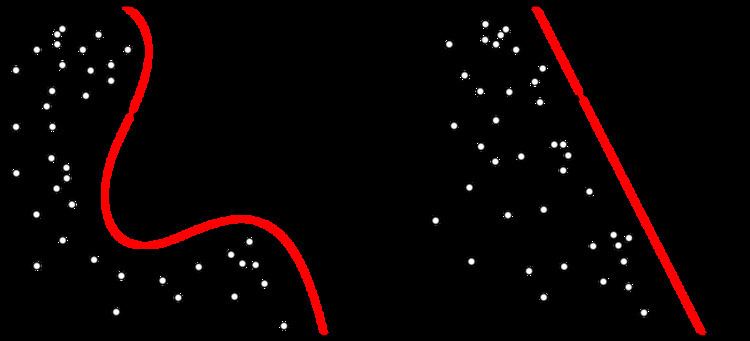 | ||
In computational learning theory, Occam learning is a model of algorithmic learning where the objective of the learner is to output a succinct representation of received training data. This is closely related to probably approximately correct (PAC) learning, where the learner is evaluated on its predictive power of a test set.
Contents
- Introduction
- Definition of Occam learning
- The relation between Occam and PAC learning
- Theorem Occam learning implies PAC learning
- Theorem Occam learning implies PAC learning cardinality version
- Proof that Occam learning implies PAC learning
- Improving sample complexity for common problems
- Extensions
- References
Occam learnability implies PAC learning, and for a wide variety of concept classes, the converse is also true: PAC learnability implies Occam learnability.
Introduction
Occam Learning is named after Occam's razor, which is a principle stating that, given all other things being equal, a shorter explanation for observed data should be favored over a lengthier explanation. The theory of Occam learning is a formal and mathematical justification for this principle. It was first shown by Blumer, et al. that Occam learning implies PAC learning, which is the standard model of learning in computational learning theory. In other words, parsimony (of the output hypothesis) implies predictive power.
Definition of Occam learning
The succinctness of a concept
Let
where
The relation between Occam and PAC learning
Occam learnability implies PAC learnability, as the following theorem of Blumer, et al. shows:
Theorem (Occam learning implies PAC learning)
Let
Here,
Theorem (Occam learning implies PAC learning, cardinality version)
Let
While the above theorems show that Occam learning is sufficient for PAC learning, it doesn't say anything about necessity. Board and Pitt show that, for a wide variety of concept classes, Occam learning is in fact necessary for PAC learning. They proved that for any concept class that is polynomially closed under exception lists, PAC learnability implies the existence of an Occam algorithm for that concept class. Concept classes that are polynomially closed under exception lists include Boolean formulas, circuits, deterministic finite automata, decision-lists, decision-trees, and other geometrically-defined concept classes.
A concept class
Proof that Occam learning implies PAC learning
We first prove the Cardinality version. Call a hypothesis
Using the second theorem, we can prove the first theorem. Since we have a
Improving sample complexity for common problems
Though Occam and PAC learnability are equivalent, the Occam framework can be used to produce tighter bounds on the sample complexity of classical problems including conjunctions, conjunctions with few relevant variables, and decision lists.
Extensions
Occam algorithms have also been shown to be successful for PAC learning in the presence of errors, probabilistic concepts, function learning and Markovian non-independent examples.
